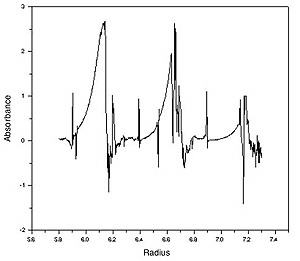 |
What information
can we currently obtain from sedimentation analysis?
There are two fundamental
sedimentation experiments: Sedimentation Equilibrium
and Sedimentation Velocity. Both experiments require
approximately 250 µL sample at a concentration range between 20
µg/mL and 5 mg/mL.
Sedimentation Equilibrium Experiments
- Determination
of the molecular weight of macromolecules (in the range of 1,000 –
2,000,000 Da) in aqueous solution at a defined pH, temperature (2–
45 degC), salt, and ligand concentration.
- Determination
of the stoichiometry and equilibrium constants for self-association
reactions. (Example: monomer < -- > trimer; monomer < -- >
dimer < -- > tetramer; etc.).
Note: We are currently unable to determine equilibrium constants for
mixed association reactions (e.g. protein A + protein B < -- >
protein complex AB) because of limitations in software.
- Determination
of the stoichiometry for stable complexes of two different macromolecules.
Example: a complex of two or more different proteins that do not dissociate
at concentrations above 0.1 mg/mL.
- Obtain a qualitative
estimate of the polydispersity of a macromolecule solution.
Sedimentation Velocity Experiments
There are several different velocity experiments that can
be used to obtain information regarding polydispersity, overall hydrodynamic
shape of macromolecules, sedimentation, diffusion, and frictional coefficients.
In our opinion, there is one velocity experiment (developed in 1992 by
W. Stafford III) that is particularly useful for modern biological applications,
the sedimentation time derivative analysis. This method calculates a distribution
function of sedimentation coefficients for the molecular species present
in the solution. For example, if the solution contains a monomeric species
in equilibrium with a large aggregate, a bimodal distribution of sedimentation
coefficients would be observed, and the sedimentation coefficient of monomer
and aggregate can be calculated. At present this is the best method we
have for examining mixed associations and assessing polydispersity.
How to Request
an Ultracentrifugation Run?
- Download
and complete a Request Form. Click here.
- Read information on how
to prepare sample. Click here.
|
 |






















